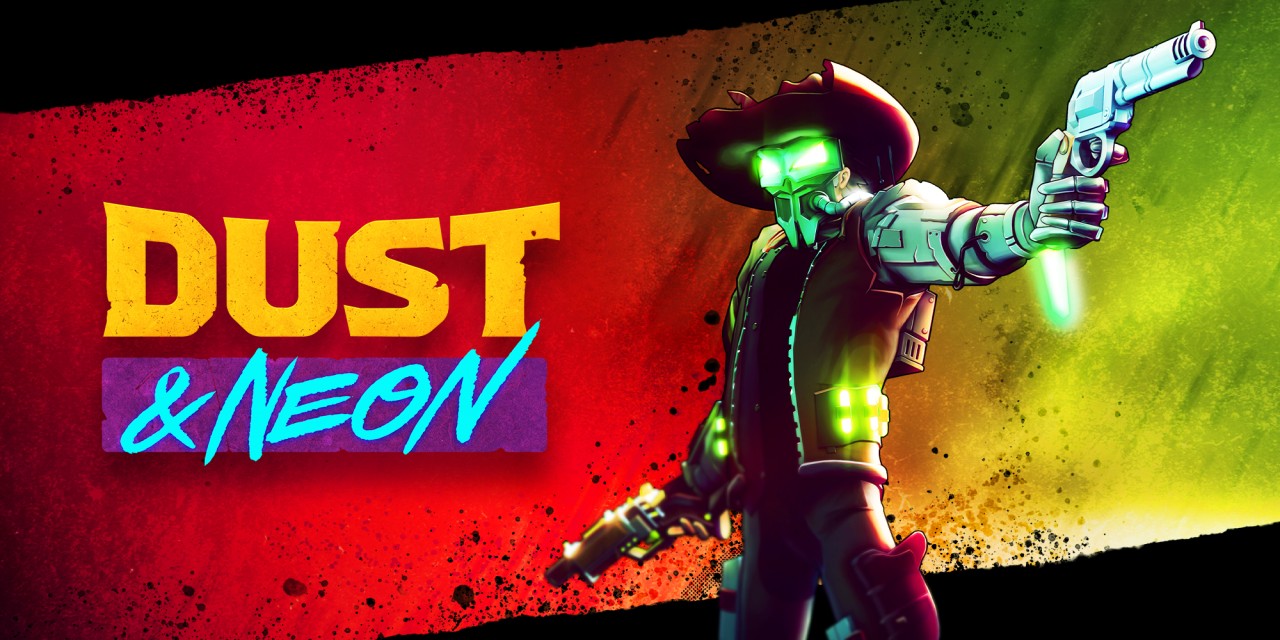One has to wonder sometimes if game developers have a wheel with “What’s Hot?” on it, and they spin to see what it lands on. In the case of Dust & Neon, they went with Westerns and roguelikes/lites. Now, that may sound trivial and glib, but just think about what Wild West-ish games have been out in the last few years. There’s Weird West, Evil West, a Desperados sequel recently…
…and now Dust & Neon. But don’t worry, this is the futuristic old west, which means robots and sand in varying degrees. Set against a background of “kill all robots”, Dust & Neon follows the try-and-try-again method we’ve seen in the likes of Hades, Neon Abyss and many more rogues in recent years.
But, snark aside, is that a bad thing? Does Dust & Neon have that enjoyable factor that puts it glowing brightly near the top, or like its title, should it blow away in the wind? Grab your Stetson and we’ll find out.
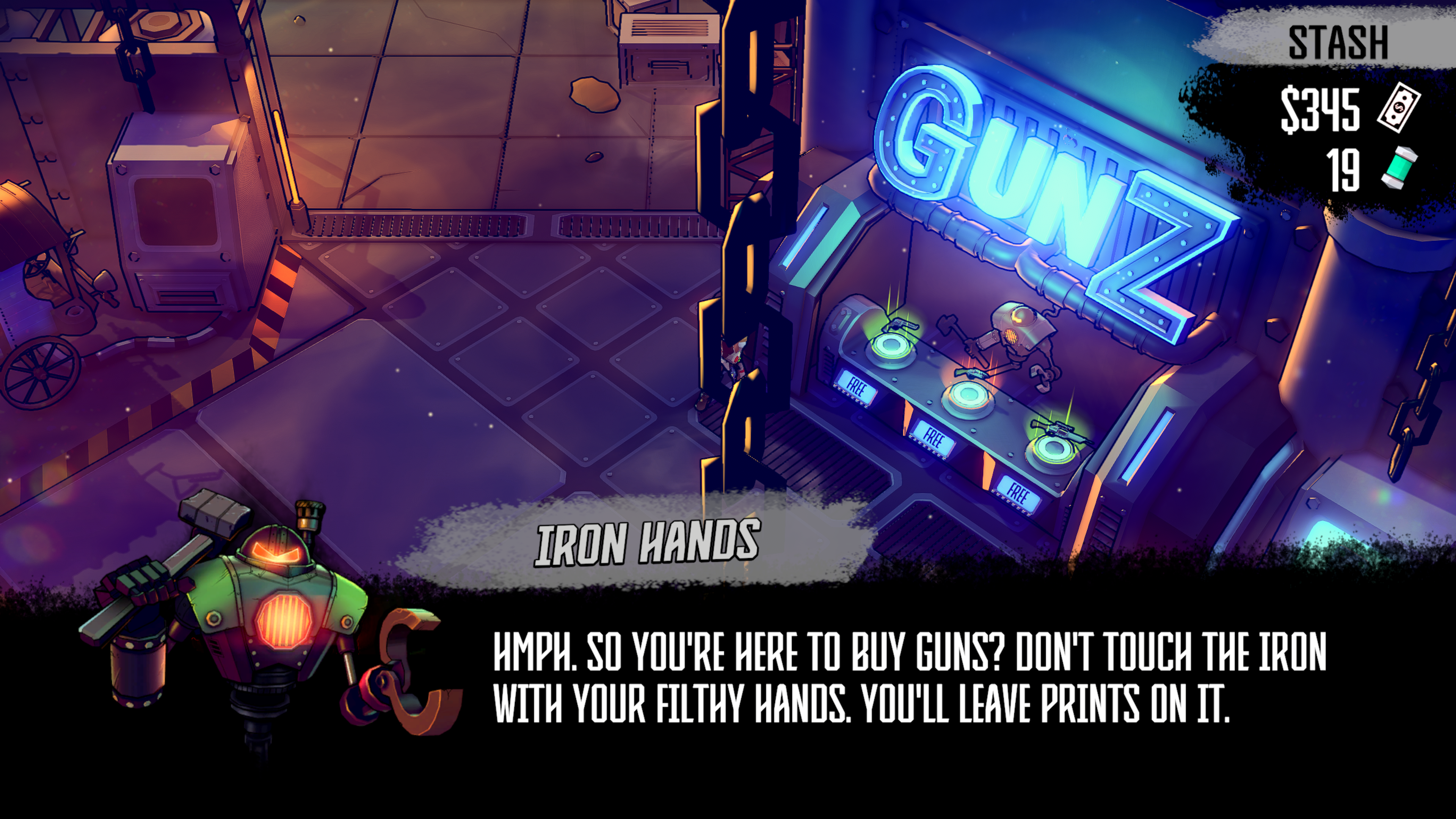
Dead Or… Well, Usually Just Dead
It’s not uncommon for roguelites to put storytelling on the back burner. Hades is an exception, as it unfolds its story through death and repetition. But for the most part, story in roguelites is a sort of… afterthought. Something that only occurs the better you play, or dies along with a player’s frustrations. Dust & Neon is more the latter: the story is there, you’ll only find out more when you complete missions, or it’ll go untold if you suck.
You are… a cyborg gunslinger. Mostly cyborg, with no discernable traits other than a Stetson and the same one-liners, this is who players will step into the multiple boots of. I say multiple, because you will die, and you will be replaced. There’s no personality to it, really.
Even the bosses that are after players don’t seem to have much investment. It’s like… well, you’re the new cyborg sheriff in town and their default is to not want you there. But then, I’m scraping here. The lack of story in a roguelite isn’t a deal breaker, it’s how it plays that matters.
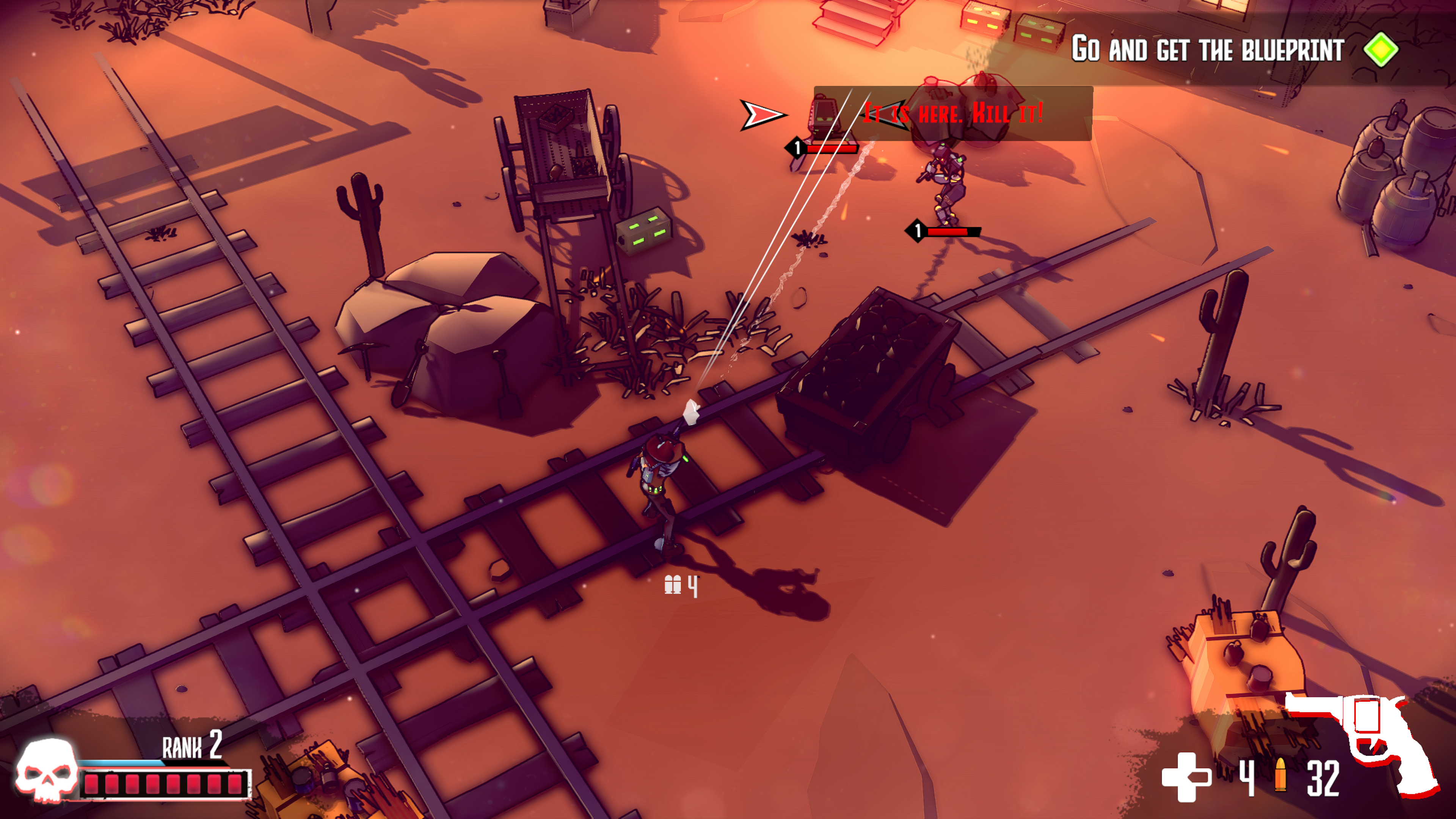
Tumbleweed and Twin-Sticks
When it comes to variation on isometric-like games, there’s really only two types: the slasher or the shooter. The former is more Hades, Bastion and Moonlighter, whilst shooters have Gatling Gears, The Ascent and lately, Aliens: Dark Descent. Yes, there are vast differences between each title, but I was going for broad strokes. So mix it up, like Bastion, if you want to be picky.
Dust & Neon is firmly in Camp Latter. It is very much a twin-stick shooter: left for movement, right for 360° aiming. Does it reinvent the formula? Not in the slightest. Yet does it bring anything new to it? No, not that either. But it does have some little twists.
Dodging and rolling are par for the course, but taking cover isn’t always a given. That it channels Wild West shootouts and has the player character take cover behind things is pretty. However, the auto-crouching when in the open makes him look like he’s had a trouser mishap.
But in terms of pick-up-and-play ease, it’s all there right from the go: pick your guns, upgrade some skills and away we go. Surely then, this is where it matters?
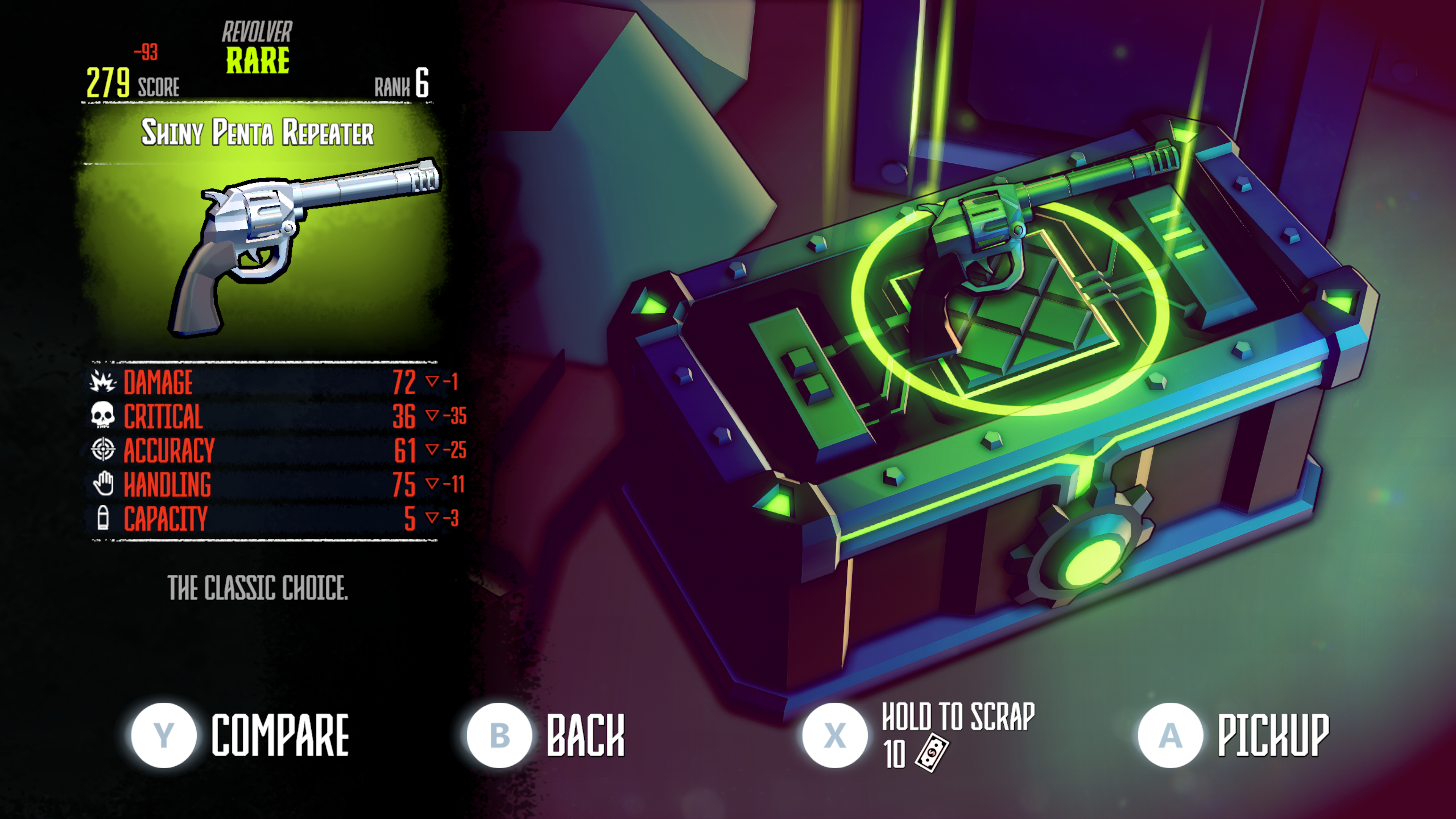
Rushin’ Roulette
The highlight of any roguelite, especially of this nature, is the weapon variety/upgrade path. Dust & Neon is limited in that regard, as it only has three types and no upgrades, so it leans into the looting aspect instead as the incentive to keep going. You see, D&N lifts this type of gameplay from Borderlands, if we’re being thematic.
Whilst players are limited to pistols, shotguns and rifles, randomisers play a big part in what they’re packing. The usual applies: how many bullets they’ll hold, damage output, chance for critical hits and the like.
Players will pick them up in, funnily enough, Borderlands-style chests. These are found throughout the somewhat procedurally generated levels, either on the field(s) or in buildings. Or, if they’ve upgraded their base (more on that), they can be purchased and/or re-rolled for better ones.
Whilst it might seem like less options is a negative, it’s in keeping with the Western theme. Y’know, despite being in the future and whatnot. But honestly, it’s nice not to be overwhelmed with too many types, given how hectic the levels can be.
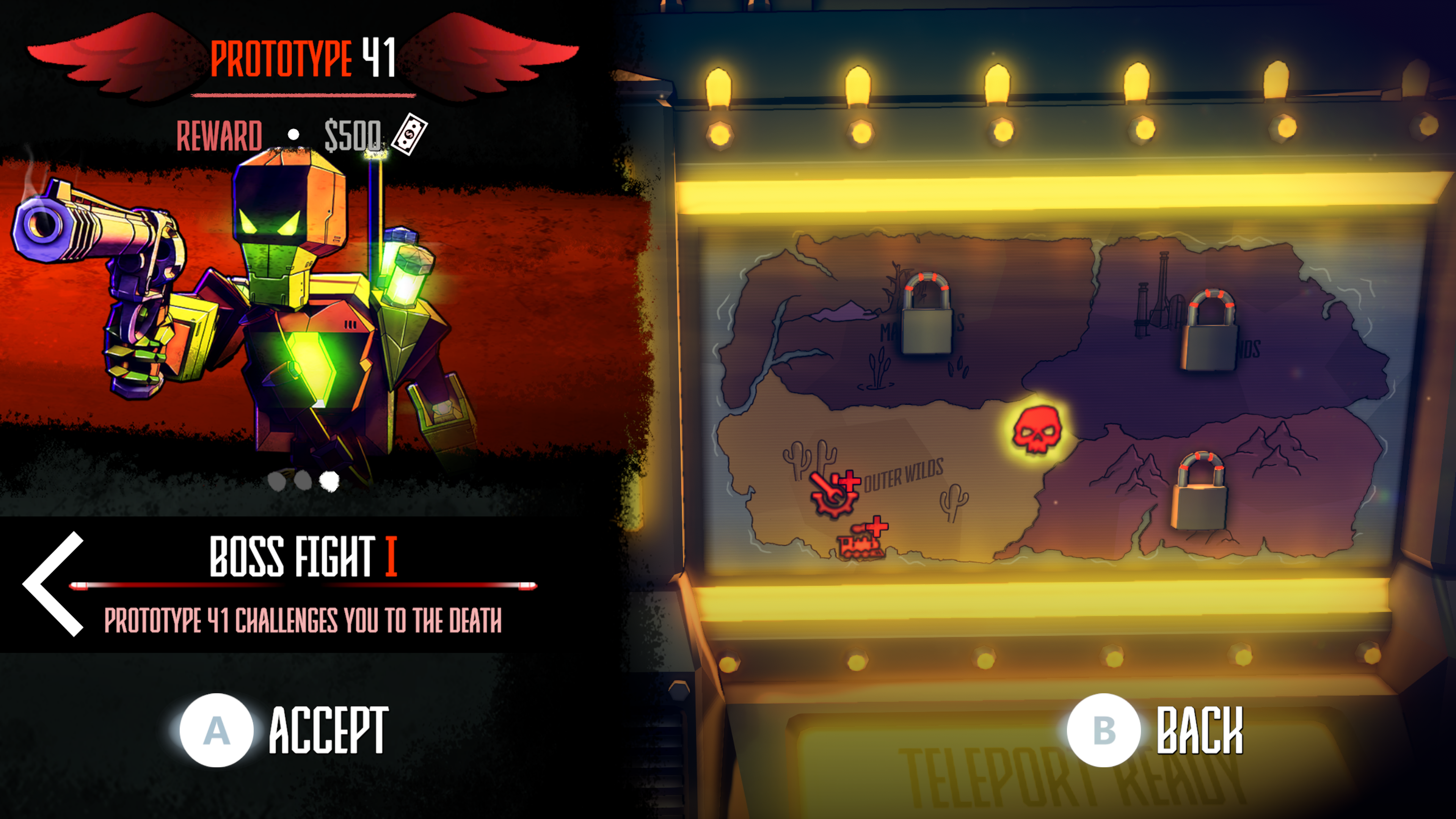
Six-Gun Shootout
Now, when it comes to variations on levels and enemies, that’s where Dust & Neon gets a bit stale. Players pick a mission from a selection, be it destroying generators or killing all baddies, and then they’re off to that stage. The stages themselves… that’s where they fall a bit flat. See one saloon, you’ve seen them all.
There’s the occasional train level, but again, it soon becomes pretty routine. So, perhaps the myriads of bad robots will keep things spicy? Well, no, as you’ll soon get bored of shooting the same type of crab-like bot, or chrome-plated cowboy shooting at you.
The bosses add a little variety, with little arena fight akin to Furi’s, as my closest comparison. Bullet-hell moments, taking down shields and whatnot add a little excitement, but let’s not kid ourselves. Much like any roguelite, Dust soon devolves into repetition. It’s just unfortunate that it happens sooner with its limited designs.

Upgrade Roads, Take Me Home
Rounding up (in keeping with the theme) Dust & Neon’s additional, passive features are the usual upgrade paths. Set in a secret base, players are free to upgrade their stats (more life, critical chances, etc) or improve weapon random odds. There’s even single-mission buffs in the form of memory chips to purchase.
But honestly, it’s nothing memorable or revolutionary to write home about. It serves its purpose, of course, making the player’s progress easier as more skills are upgraded. As with weapons and randomisers, the more generous the input, the better standard of weaponry.
And if that’s what you want in a roguelite, to pass the time, then you can’t ask for anything more. Missions come in, with varying difficulties and completion parameters, and the reward is a higher character level and better guns to go a-blazin’ with.
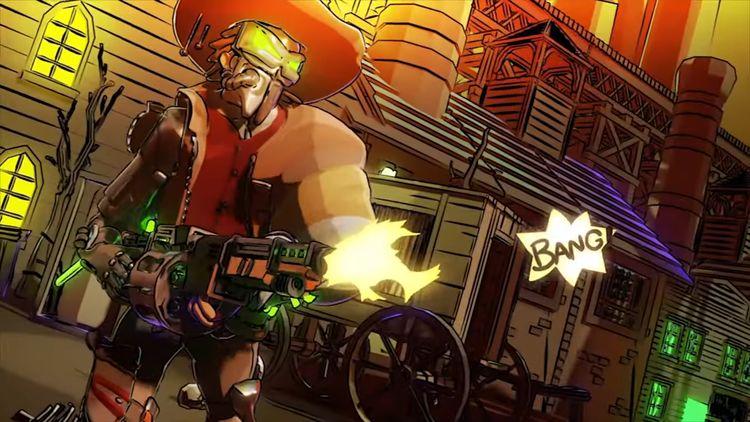
The Tired West
I have had fun with Dust & Neon. My view on roguelites has definitely changed post-Hades, so I went into this with some optimism. And I like it… to an extent.
The problem is, is that there’s just too many roguelites out there and this does nothing to reinvent or absolutely grip me into staying with it. It’s very evident that it was a case of “gameplay first, plot eventually” as I can’t even remember the supporting character’s names.
It plays perfectly well, if you just want a top-down(ish) twin-stick looter shooter. But that’s it… and in that regard, it’s just very middle of the road. If you are looking for something to while away the time, then this is certainly not the worst out there. If you want something more though, then there’s more engagement to be had elsewhere.
In a sea full of roguelikes/lites, Dust & Neon floats on by like an innocuous limpet attached to bigger players. It’s not terrible, nor is it bringing anything new to the table. The future-retro style is attractive to look at, which otherwise holds up this rather shallow experience.

Dust & Neon is available now on Xbox One (reviewed on Series S), PlayStation 4, Nintendo Switch, iOS and PC via Steam.
Developer: David Marquardt Studios
Publisher: Rogue Games Inc.
Disclaimer: In order to complete this review, we were provided with a promotional copy of the game. For our full review policy, please go here.
If you enjoyed this article or any more of our content, please consider our Patreon.
Make sure to follow Finger Guns on our social channels –Twitter, Facebook, Twitch, Spotify or Apple Podcasts – to keep up to date on our news, reviews and features.
